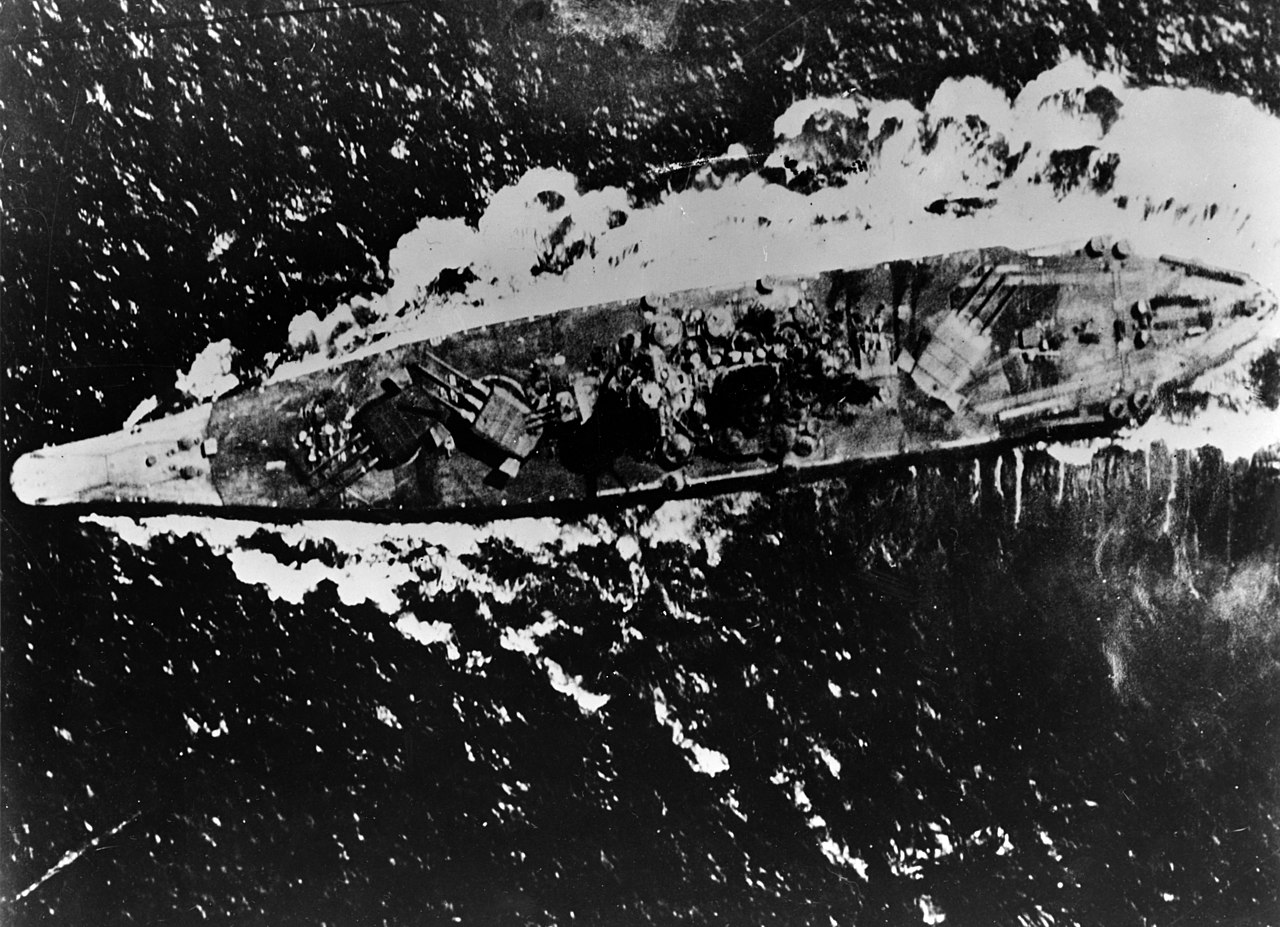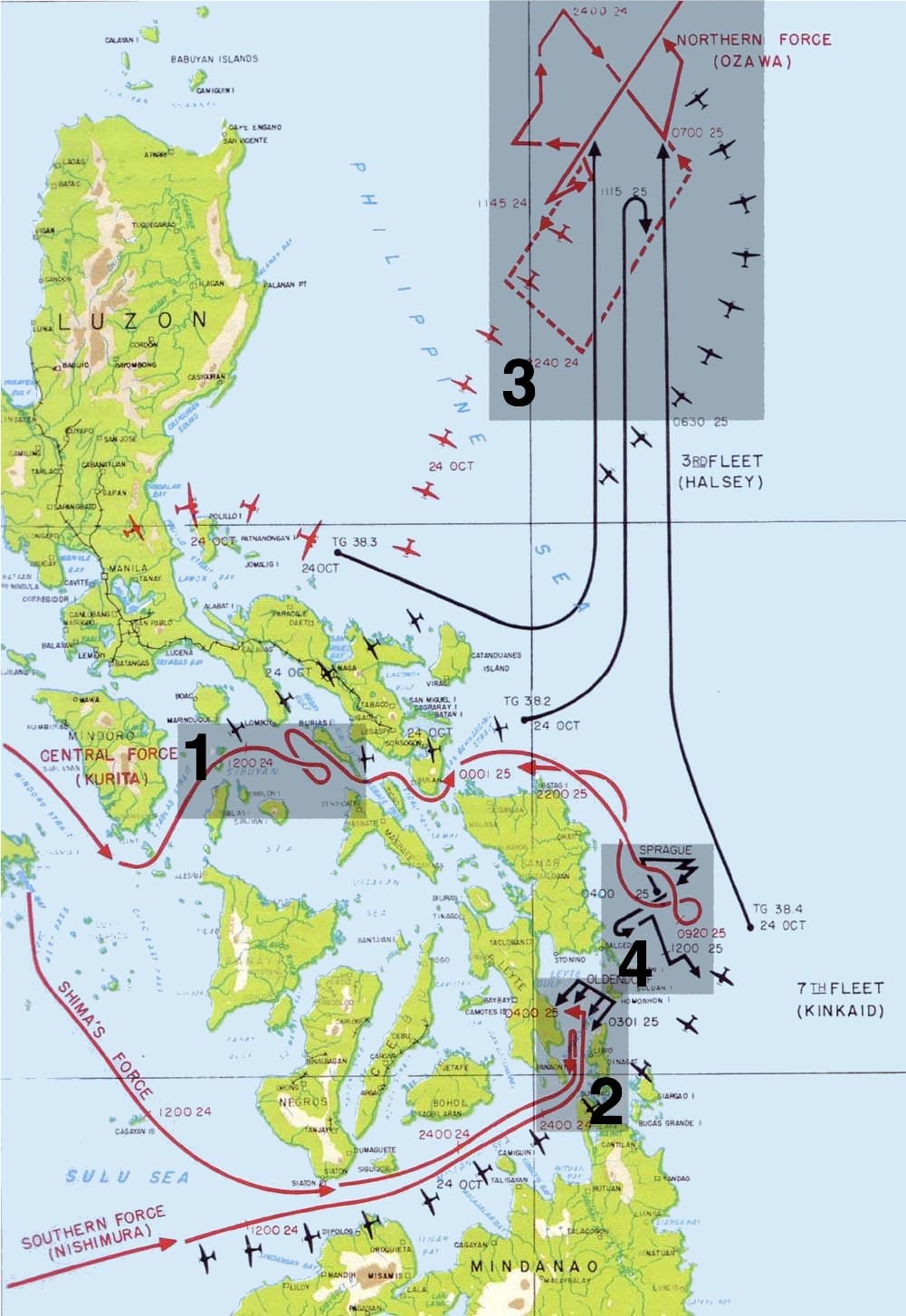On October 23, 1944, the largest naval battle of World War II — and by some measures, the largest naval battle in recorded history — began in the Leyte Gulf off the coast of the Philippines.
The Battle of Leyte Gulf saw units of the U.S. Navy’s 3rd and 7th fleets and Royal Australian Navy elements battle with the Imperial Japanese Navy. The three-day naval battle was actually a series of engagements around the Philippine islands of Leyte, Samar and Luzon.
According to a U.S. Naval Institute history of the battle, the fighting at Leyte Gulf began as a Japanese counter attack to the U.S. invasion of the Philippines. An Imperial Japanese Navy formed a task force of seven battleships, 15 cruisers, and 20 destroyers launched Operation Sho Go to attack the U.S. forces from the north, while a second Japanese task force of a heavy cruiser, two battleships and four destroyers would attack from the south. The famed Japanese battleships Yamato and Musashi, the largest Japanese battleships, were among those present at the battle.

The Japanese battleship Yamato underway during the Battle of the Sibuyan Sea, 24 October 1944. (U.S. Navy photo/Released)
Historic accounts place the number of allied ships in the battle at around 190, with the U.S. bringing nine fleet aircraft carriers, eight light carriers, 18 escort carriers, 12 battleships, 23 cruisers, 106 destroyers and destroyer escorts. One British warship and 11 Australian ships were also present in the battle. The allied forces also had over 1,000 aircraft in the battle.
According to Norwich University, the Battle of Leyte Gulf was the largest in terms of the distance over which the fighting took place, with forces fighting over a span of more than 100,000 square miles of sea.

The U.S. Navy light aircraft carrier USS Princeton (CVL-23) burning soon after she was hit by a Japanese bomb while operating off the Philippines on 24 October 1944. (U.S. Navy photo/Released)
According to a U.S. Navy history of the battle, the Japanese forces approaching, U.S. Adm. William “Bull” Halsey, the commander of the U.S. 3rd Fleet, was faced with the dilemma to wait for the Japanese attack, whether to split his forces to defend against the Japanese attack and assist 7th Fleet forces under attack to his south, or directly engage the approaching Japanese task force. On October 24, Halsey ordered his forces to attack the Japanese task force directly.
The Battle of Leyte Gulf formed into four major subsidiary battles, the Battle of the Sibuyan Sea, the Battle of Surigao Strait, the Battle off Samar, and the Battle off Cape Engaño.

Map of the four main engagements of the battle of Leyte Gulf. (Wikimedia Commons/Released)
The battle ended in a decisive victory for the U.S. and its allies. The Japanese lost one fleet aircraft carrier and three more light carriers, three battleships, six heavy and four light cruisers and eleven destroyers. According to History.com, the Japanese also lost several hundred aircraft and over 10,500 sailors. The battleship Musashi was among those lost in the battle.

U.S. Navy Task Force 38 aircraft attack the Japanese battleship Musashi (foreground) and a destroyer in the Sibuyan Sea, 24 October 1944. (U.S. Navy photo/Released)
The allies, by contrast, lost one light carrier, two escort carriers, two destroyers and one destroyer-escort.
The Japanese defeat at the Battle of Leyte Gulf was significant in that it diminished much of Japan’s remaining surface fleet and, according to History.com, virtually ended Japan’s ability to gather and transport resources from Southeast Asia back to Japan.



